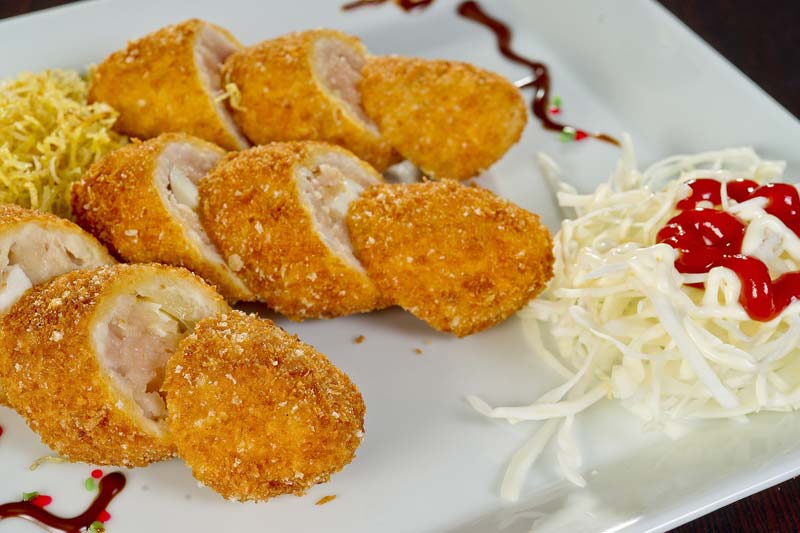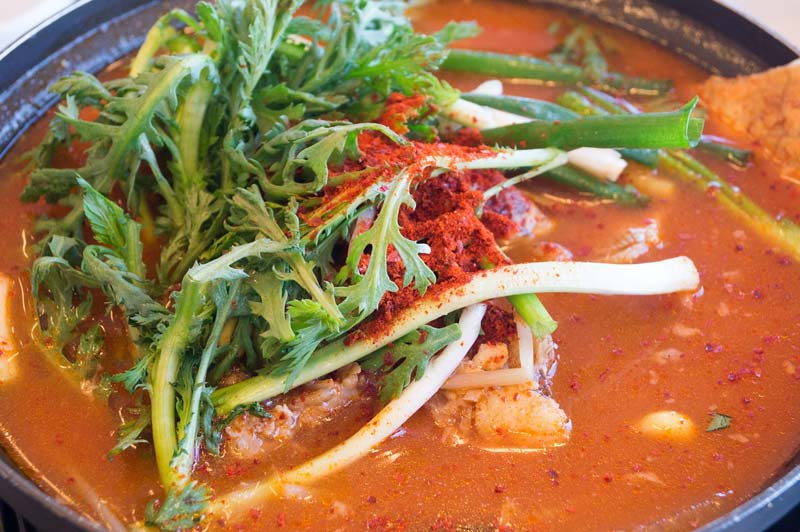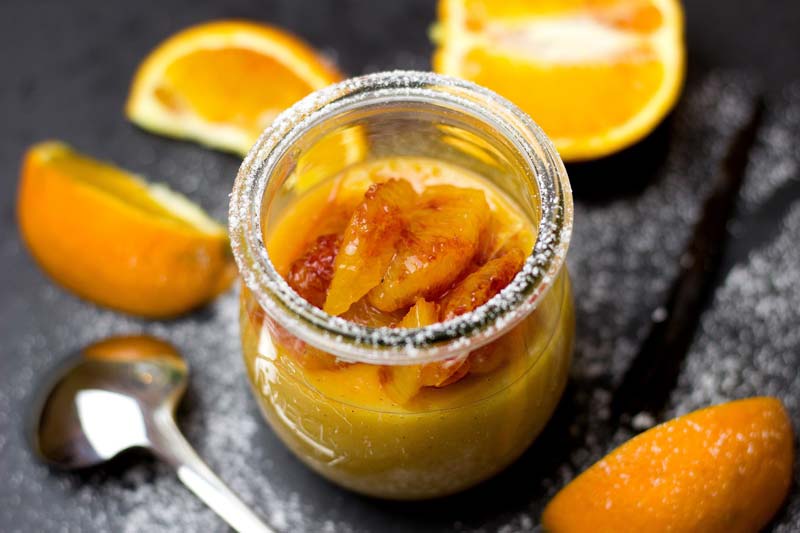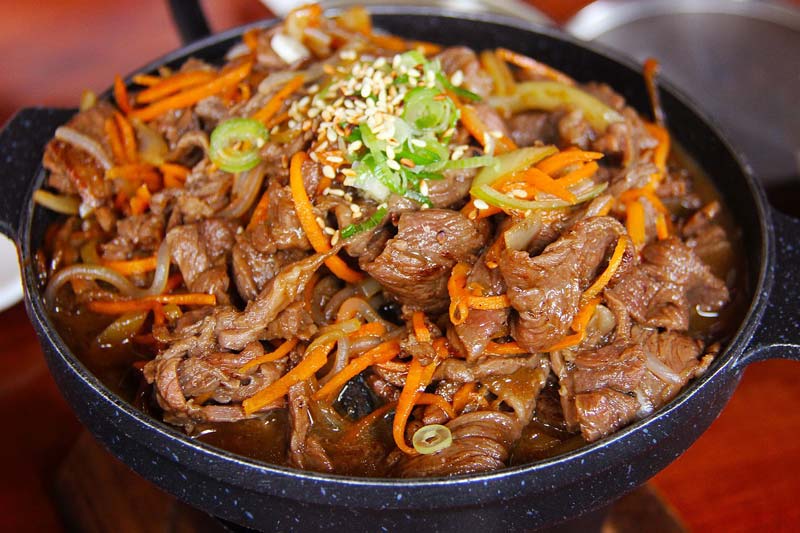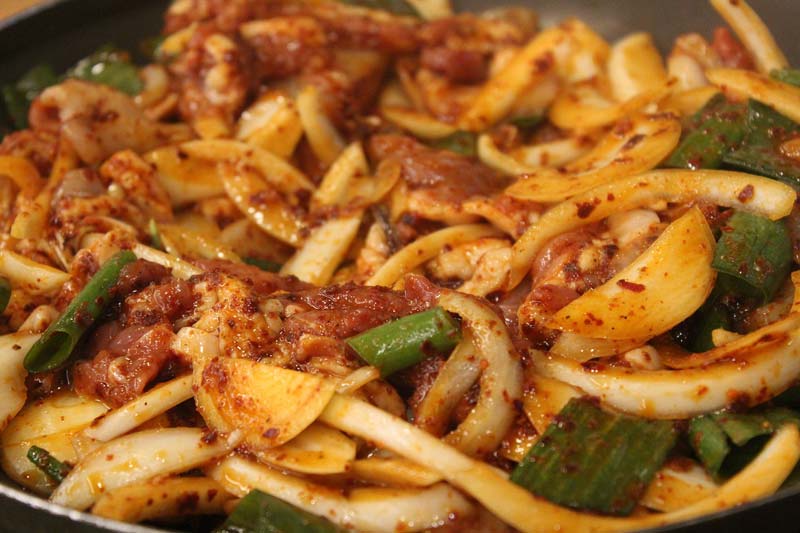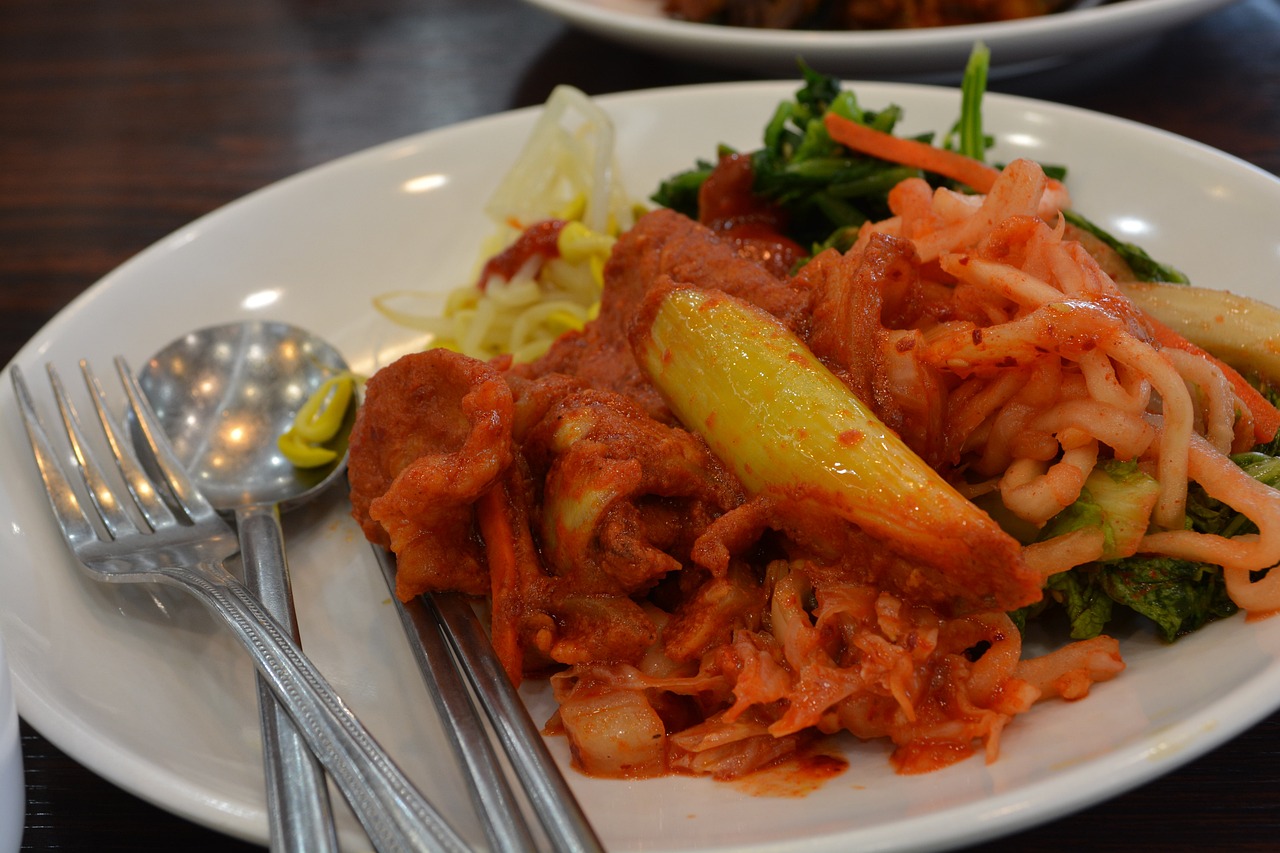What is Soybean Paste?
Soybean paste (Korean name : deonjang) is made from soybeans, rice, barley, wheat, and fatted soybeans. These primary ingredients are mixed with salt and Aspergillus oryzae for fermenting and maturing. Lumps of fermented soybeans (meju) are put in brine until the brine is fermented, and the liquid is separated from the solid.
Soybean paste has been believed to have 5 virtues: devotion – it keeps its taste even when it is mixed with other ingredients; steadiness – it does not decay for a long time; merciful heart of Buddha – it removes fish and oily flavor; generosity – it neutralizes spicy tastes; and harmony – it harmonizes well with any other food. Soybean paste is one of the traditional Korean foods carried over for generations. It is loved by Korean people for its excellency in taste and effects.
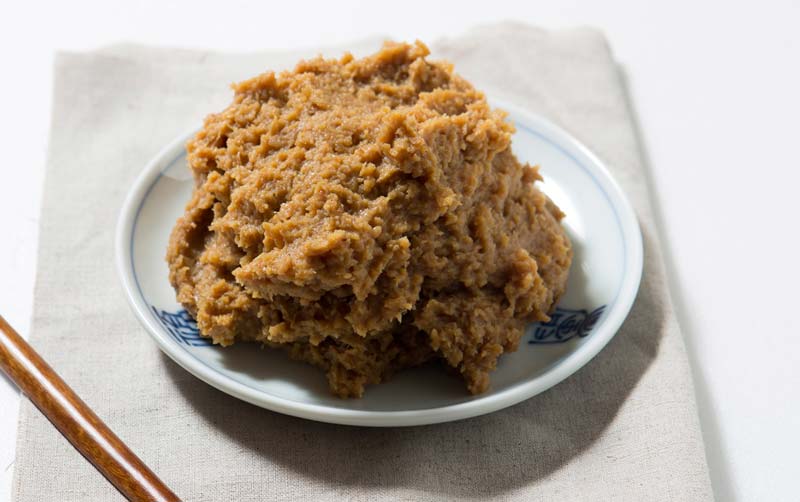
Deonjang. Soybean paste made from soybeans, rice, barley, wheat, and fatted soybeans, fot. 국립국어원, wikipedia
History
Lets find out some of the facts about soybeans, the primary ingredient of soybean paste. Soybeans originated from the southern part of Manchuria. The birthplace of the Maek tribe, this area belonged to Goguryo, one of the three Kingdoms in ancient Korea. This history tells as that the original place of soybeans is Korea. Wild and hybrid varieties of beans are found not only in Manchuria, but also in all parts of the Korean peninsula. This reconfirms that soybeans originated from Korea. Soybean farming started 4,000 years ago, according to literature, archeological specimens, and research on genetics.
Korea, the cradle of bean culture, began making soybean paste a long time ago by boiling soybeans, shaping them into lumps, and fermenting the lumps. Soybean paste in the early days was a thick mixture of soybean sauce and soybean paste. It is presumed that many kinds of soybean pastes were made with fermented soybeans, and the liquid was separated from the mixture of fermented soybeans and brine during the Three-Kingdom period.
The technique of making soybean paste was introduced to China, a neighbor of Korea. Chinese people recognized Korean (Goguryo) people’s skill in making fermented food, and called the smell of soybean paste the “Smell of Korea.” As Korean meju (a fermented soybean product) was introduced to China, Chinese people began to make completely different soybean pastes from the traditional ones. Ways of making soybean paste during the Yi Dynasty are found in literature. According to Guhwangboyubang (1660, a book about hardy crops), meju was made by using soybeans and wheat, and greatly different from those used today. Ways of making meju were first introduced in Jeungbosallib-gyeongje (a book about farming), and they still form the base of today’s soybean paste manufacturing method.
Korea, as the cradle of bean culture, developed meju, a processed soybean food, and introduced it to neighboring countries, changing their diets greatly.
(fermentfood/fermentfood2_2_a.jsp)
